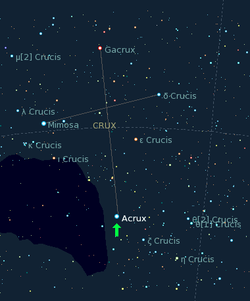Especialidades JA/Cosmografía - Avanzado/Respuestas 2
| Cosmografía - Avanzado | ||
|---|---|---|
| División Norteamericana
|
Destreza: 3 Año de introducción: 1949 |
|
Requisitos
Para consejos e instrucciones, véase Cosmografía.
La esfera celeste es una esfera imaginario en rotación de un «radio gigantesco», con la Tierra en el centro. Todos los objetos en los cielos pueden ser considerados como si estuvieran recostados sobre esta esfera.
Los dos polos celestes son los puntos imaginarios donde el eje de rotación de la Tierra intersecta la esfera celeste. El polo celeste al norte actualmente tiene casi las mismas coordenadas que la estrella brillante de Polaris (que en latín significa «Estrella Polar»).
El ecuador celeste es un círculo máximo de la esfera celeste imaginaria, que es en realidad el plano del ecuador terrestre extendido hacia el universo (es decir, podría ser construido mediante la extrapolación del ecuador de la Tierra hasta que toque la esfera celeste).
El horizonte es la línea que separa la tierra del cielo.
Ascensión recta es el término astronómico para una de las dos coordenadas de un punto en la esfera celeste cuando se utiliza el sistema de coordenadas ecuatoriales. Es equivalente a la longitud terrestre.
La declinación es una de las dos coordenadas del sistema de coordenadas ecuatoriales, siendo el otro la ascensión recta o el ángulo horario. La declinación es comparable a la latitud, proyectada a la esfera celeste, y se mide en grados al norte y al sur del ecuador celeste. Por lo tanto, los puntos al norte del ecuador celeste tienen declinación positiva, mientras que los del sur tienen declinación negativa.
Un tránsito es el evento astronómico que se produce cuando un cuerpo celeste parece que se mueve a través de la cara de otro cuerpo celeste, como se ha visto por un observador en un cierto punto de vista particular.
Conjunción significa que, como se ve desde algún lugar (por lo general en la Tierra), dos cuerpos celestes aparecen cerca uno del otro en el cielo.
La Eclíptica es el camino aparente del sol trazada a lo largo del cielo en el transcurso del año. Más exactamente, es la intersección de la esfera celeste con el plano eclíptico, que es el plano geométrico que contiene la órbita media de la Tierra alrededor del sol.
Las constelaciones que se pueden ver durante toda la noche en cada hemisferio son las que están cerca de los polos celeste.
Adventist Youth Honors Answer Book/Stars/Constellations visible all night/es
Acrux
Acrux is the brightest star in constellation Crux (the Southern Cross) and the thirteenth brightest star in the nighttime sky, at visual magnitude 0.77. Acrux is represented in the flag of Australia as one of the 5 stars that comprise the Southern Cross. Since Acrux is at roughly −60° declination, it is generally only visible south of the Tropic of Cancer and therefore didn't receive an ancient traditional name; "Acrux" is simply a combination of the A in Alpha plus Crux (meaning "cross"). Acrux is the southernmost first magnitude star, just a bit more southerly than Alpha Centauri. Acrux can be seen as far north as Miami, Florida, but it only barely rises above the horizon. You might be able to see it due south around May 8 (any year) at about 9:00 pm. If you wait around until midnight, Alpha Centauri and Hadar will also be visible around that date as well (also directly to the south and just over the horizon).

Since the Earth's crust is solid, it moves, along with everything inside it, as one whole, as defined by the average force on it. For the Earth's shape this average force is equal to the force on its center. The water at the surface is free to move following forces on its particles. One of the forces that affects tides is the gravity of the Moon. The force of gravity gets weaker as the distance between two bodies increases, and since the center of the Earth is farther away than the surface nearest the Moon, the Moon's gravity pulls on the surface water stronger than it pulls on the whole of the Earth. This causes the water level to rise and causes a high tide.
Meanwhile, on the side of the Earth opposite the Moon, the surface is farther from the moon than the Earth's center, so the Moon pulls more strongly on the Earth as a whole than it does on the water. This causes the water move away from the Moon, but since this is on the other side of the Earth, the water level still rises, causing a high tide.
Low tides occur at the points on the Earth where the Moon is just rising or just setting - that is, where the surface is at a 90° angle from the moon.
The Sun also has a tidal effect, but since it is much farther away, the difference between the pull of gravity at the surface of the Earth and the pull of gravity at the center is much smaller as compared to the Moon. When the tidal action caused by the Sun and Moon reinforce one another we have a spring tide (which is higher than normal). When they oppose one another, we have a neap tide (which is also a high tide, but lower than normal).
- Job 9:9 (21st Century King James Version)
- "Who maketh Arcturus, Orion and Pleiades, and the chambers of the south;"
- Job 38:31,32 (21st Century King James Version)
- "Canst thou bind the sweet influences of Pleiades, or loose the bands of Orion? Canst thou bring forth Mazzaroth in his season? Or canst thou guide Arcturus with his sons?"
- Amos 5:8 (NIV)
- "He who made the Pleiades and Orion, who turns blackness into dawn and darkens day into night, who calls for the waters of the sea and pours them out over the face of the land— the LORD is his name."
Most English versions of the Bible translate Arcturus as The Bear.
References
- Wikipedia articles:
- Categoría: Tiene imagen de insignia
- Adventist Youth Honors Answer Book/Honors/es
- Adventist Youth Honors Answer Book/es
- Adventist Youth Honors Answer Book/Skill Level 3/es
- Categoría: Libro de respuestas de especialidades JA/Especialidades introducidas en 1949
- Adventist Youth Honors Answer Book/North American Division/es
- Adventist Youth Honors Answer Book/Nature/es
- Adventist Youth Honors Answer Book/Nature/Primary/es
- Adventist Youth Honors Answer Book



